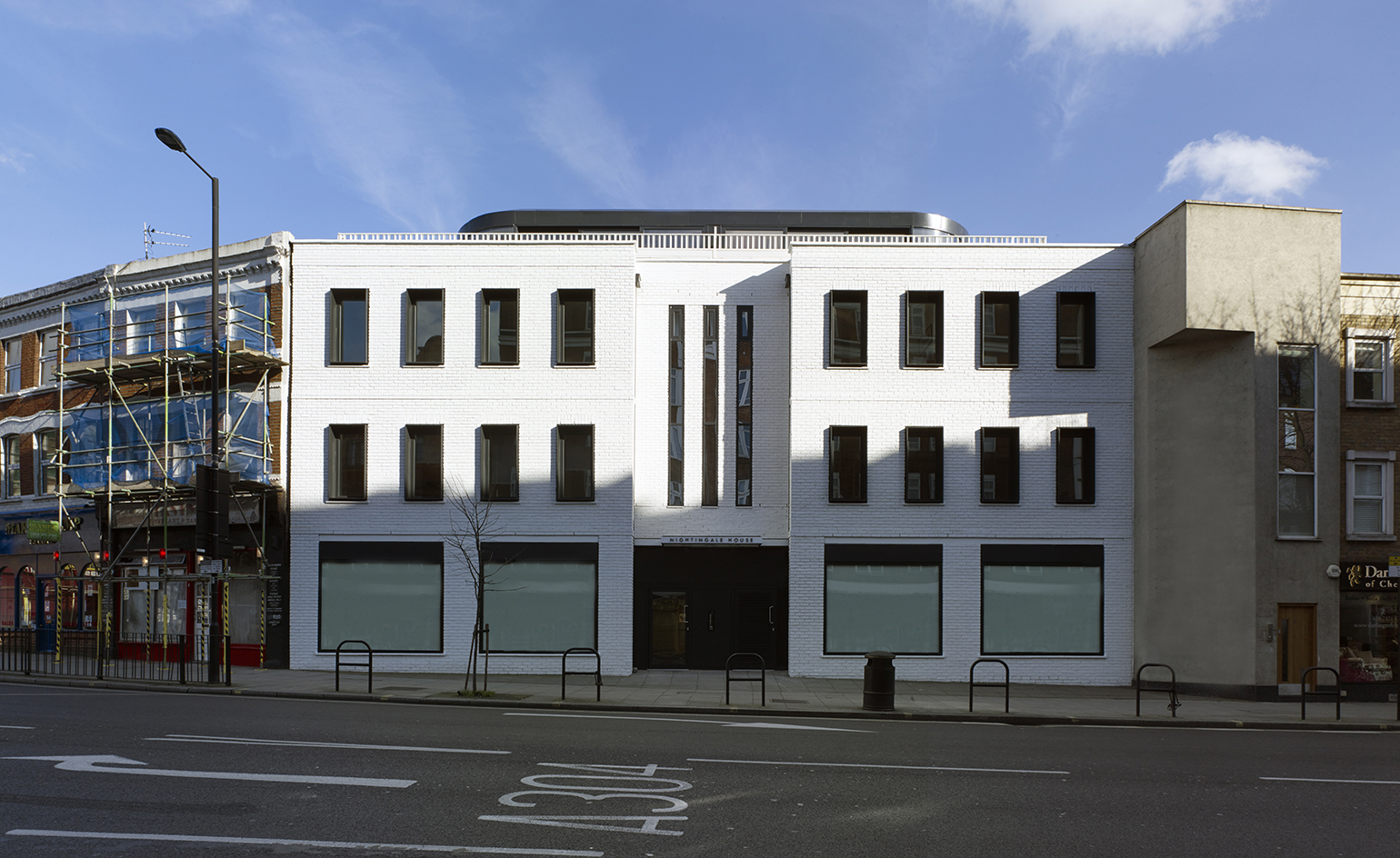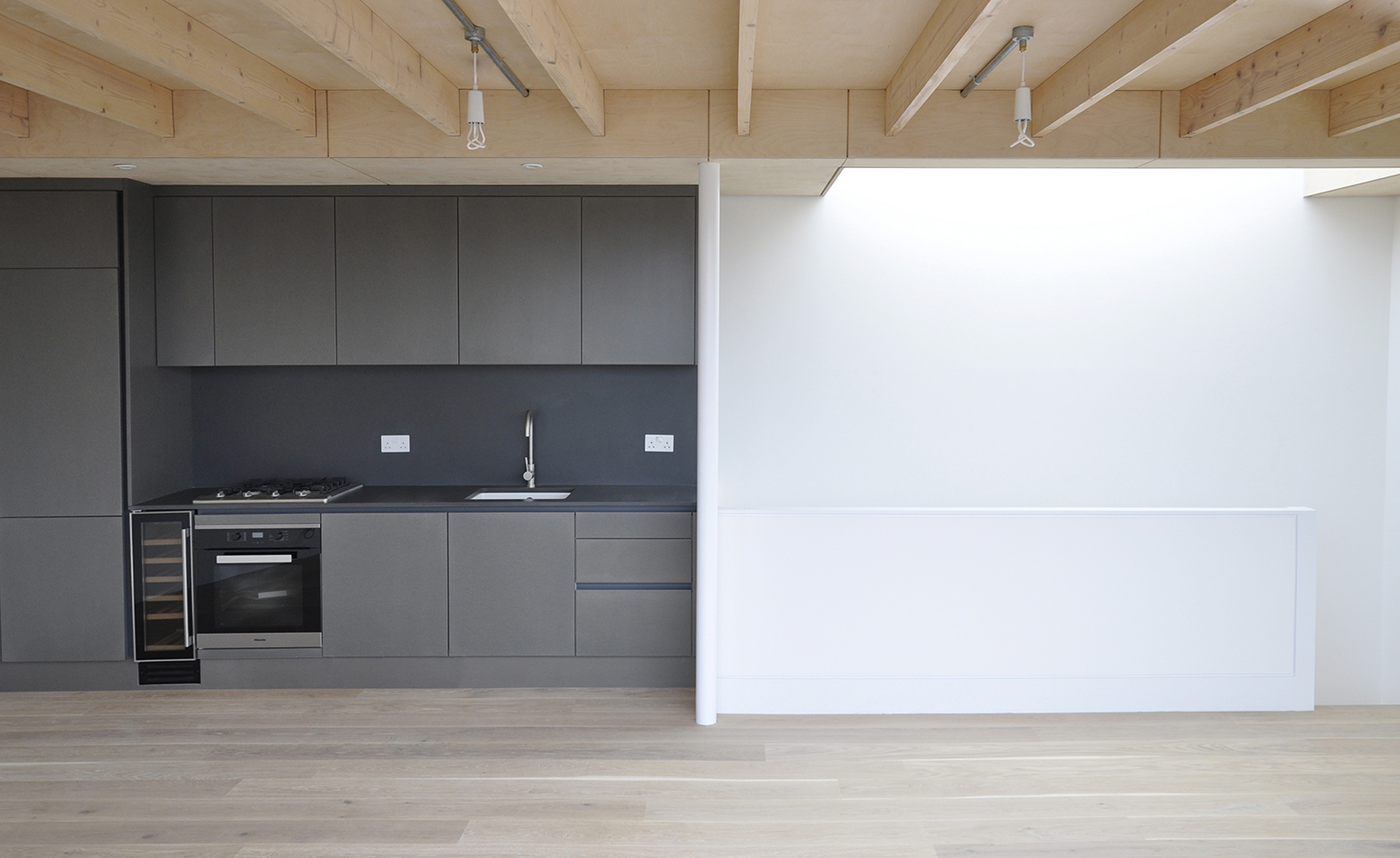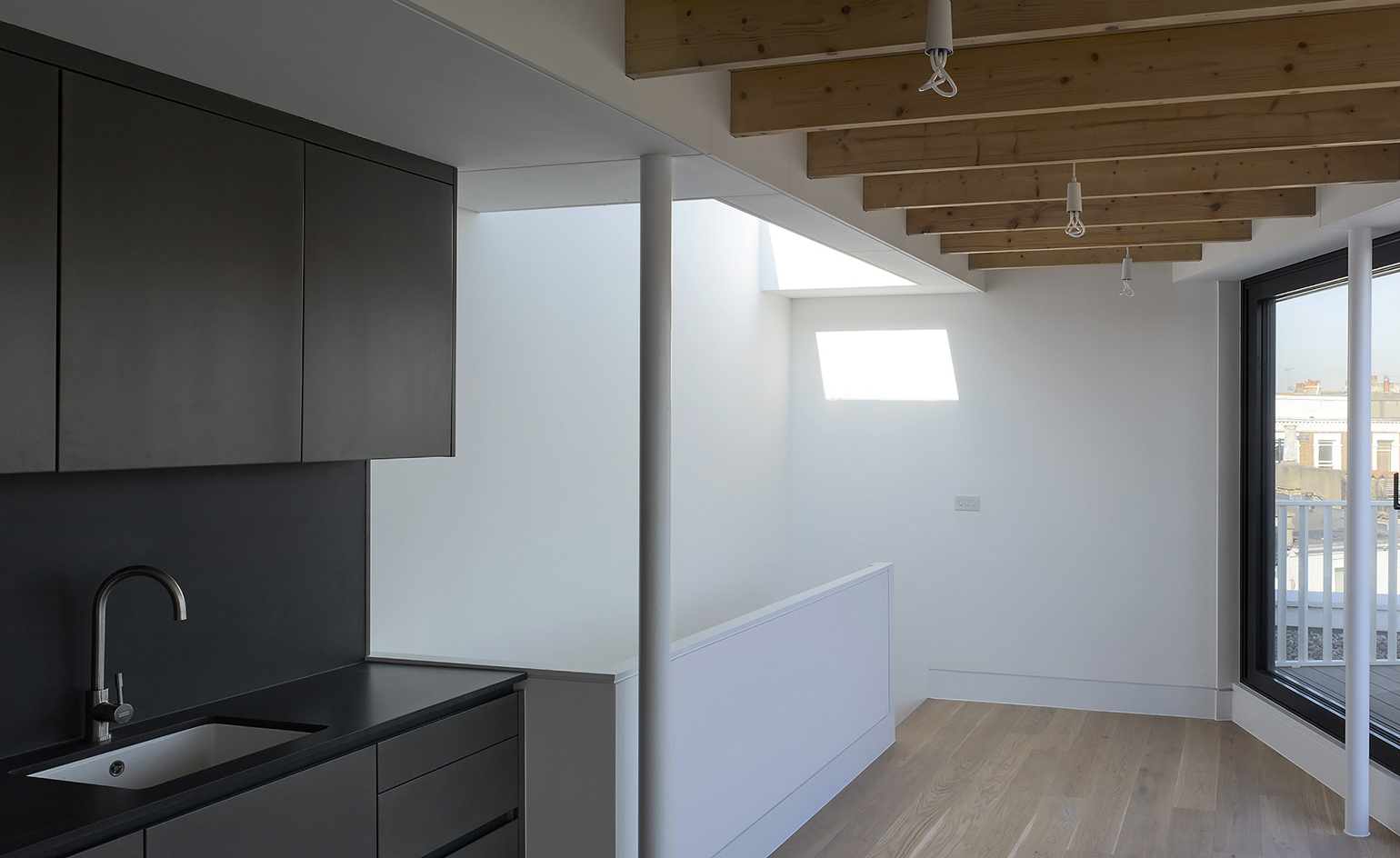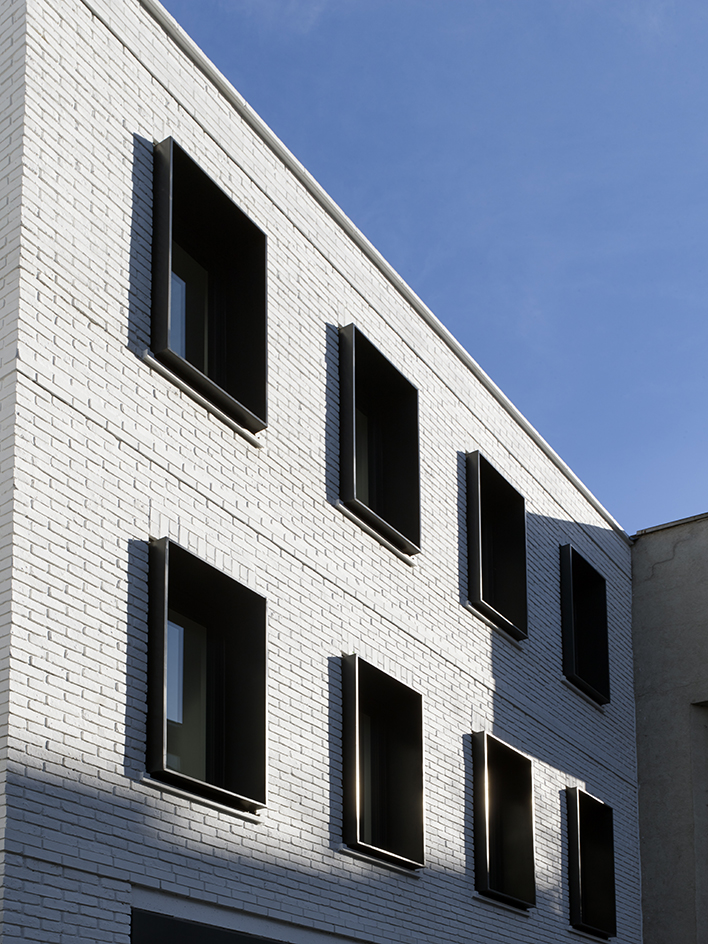Modern adaptation: a Fulham infill gets a makeover by Roz Barr Architects

Presented with a neglected and shoddily constructed 1980s infill situated within the Fulham Park Gardens Conservation Area, Roz Barr Architects knew they had a challenge on their hands. But the firm worked hard, transforming Nightingale House into a delightfully modern mix of bright residential and commercial spaces, hosting eight spacious apartments and a health clinic on the ground floor.
The 920 sq m mixed-use development was previously used, in part, as a doctor’s surgery. Even though the building was long overdue a modern refresh, due to strict budgeting and building regulations, Barr had to adopt a smart approach to the makeover. ‘The greatest challenge we faced was through the planning process. Our initial scheme was for a more generous roof top extension,’ Barr explains. ‘But due to its location in the conservation area, we were constantly challenged to reduce the height and set back the upper storey’.
The renovation began with a robust structural strengthening and a rooftop extension, both guided by two design principles; a balance of rough and exposed materials, and an interplay of light and dark surfaces, executed through the use of a monochromatic colour scheme.
The existing façades were treated with a unique white mineral wash, that soaks deep into the brick, providing a bold and opaque colour finish, while still preserving the original rough texture of the material. A series of dark, pressed aluminium windows protrude from the building’s front and rear. Looking almost like they’ve been punched through the façade, they cast a range of dramatic shadows to a previously uneventful exterior.
Barr’s greyscale colourway becomes apparent in Nightingale House’s apartments. The kitchen cabinetry, made of a matt-lacquered light grey high-density fibreboard, offsets the pale oak flooring and whitewashed timber ceilings present throughout. Dark grey ceramic tiles and vibrant white sanitaryware in the bathrooms are accompanied by extruded vanity units that mirror the external windowframe reveals.

The 920 sq m mixed-use development used to be a doctor's surgery; it now contains eight bright apartments and a health clinic on the ground floor.

The kitchen cabinetry, made of a matt-lacquered, high-density fibreboard offsets the pale oak flooring and whitewashed timber ceilings, found throughout the apartments.

The interior's overhaul was guided by two design principles: a balance of rough and exposed materials, and an interplay of light and dark surfaces.

The façades were treated with a white mineral wash that soaks deep into the brick, providing a bold and opaque colour finish, while still preserving the original rough texture of the exterior.
INFORMATION
For more information on Nightingale House, visit Roz Barr Architects' website
Receive our daily digest of inspiration, escapism and design stories from around the world direct to your inbox.
-
 At last: a London hotel that’s great for groups and extended stays
At last: a London hotel that’s great for groups and extended staysThe July London Victoria, a new aparthotel concept just steps away from one of the city's busiest rail stations, is perfect for weekends and long-term visits alike
-
 Three new smartwatches showcase new frontiers in affordable timepiece design
Three new smartwatches showcase new frontiers in affordable timepiece designLong may you run: smartwatches from Withit, Kospet and OnePlus favour function and value above all else, demonstrating just how much the smartwatch has evolved in recent years
-
 Debuts, dandies, Demi Moore: 25 fashion moments that defined 2025 in style
Debuts, dandies, Demi Moore: 25 fashion moments that defined 2025 in style2025 was a watershed year in fashion. As selected by the Wallpaper* style team, here are the 25 moments that defined the zeitgeist
-
 Arbour House is a north London home that lies low but punches high
Arbour House is a north London home that lies low but punches highArbour House by Andrei Saltykov is a low-lying Crouch End home with a striking roof structure that sets it apart
-
 A former agricultural building is transformed into a minimal rural home by Bindloss Dawes
A former agricultural building is transformed into a minimal rural home by Bindloss DawesZero-carbon design meets adaptive re-use in the Tractor Shed, a stripped-back house in a country village by Somerset architects Bindloss Dawes
-
 RIBA House of the Year 2025 is a ‘rare mixture of sensitivity and boldness’
RIBA House of the Year 2025 is a ‘rare mixture of sensitivity and boldness’Topping the list of seven shortlisted homes, Izat Arundell’s Hebridean self-build – named Caochan na Creige – is announced as the RIBA House of the Year 2025
-
 In addition to brutalist buildings, Alison Smithson designed some of the most creative Christmas cards we've seen
In addition to brutalist buildings, Alison Smithson designed some of the most creative Christmas cards we've seenThe architect’s collection of season’s greetings is on show at the Roca London Gallery, just in time for the holidays
-
 In South Wales, a remote coastal farmhouse flaunts its modern revamp, primed for hosting
In South Wales, a remote coastal farmhouse flaunts its modern revamp, primed for hostingA farmhouse perched on the Gower Peninsula, Delfyd Farm reveals its ground-floor refresh by architecture studio Rural Office, which created a cosy home with breathtaking views
-
 A revived public space in Aberdeen is named Scotland’s building of the year
A revived public space in Aberdeen is named Scotland’s building of the yearAberdeen's Union Terrace Gardens by Stallan-Brand Architecture + Design and LDA Design wins the 2025 Andrew Doolan Best Building in Scotland Award
-
 The Architecture Edit: Wallpaper’s houses of the month
The Architecture Edit: Wallpaper’s houses of the monthFrom wineries-turned-music studios to fire-resistant holiday homes, these are the properties that have most impressed the Wallpaper* editors this month
-
 A refreshed 1950s apartment in East London allows for moments of discovery
A refreshed 1950s apartment in East London allows for moments of discoveryWith this 1950s apartment redesign, London-based architects Studio Naama wanted to create a residence which reflects the fun and individual nature of the clients